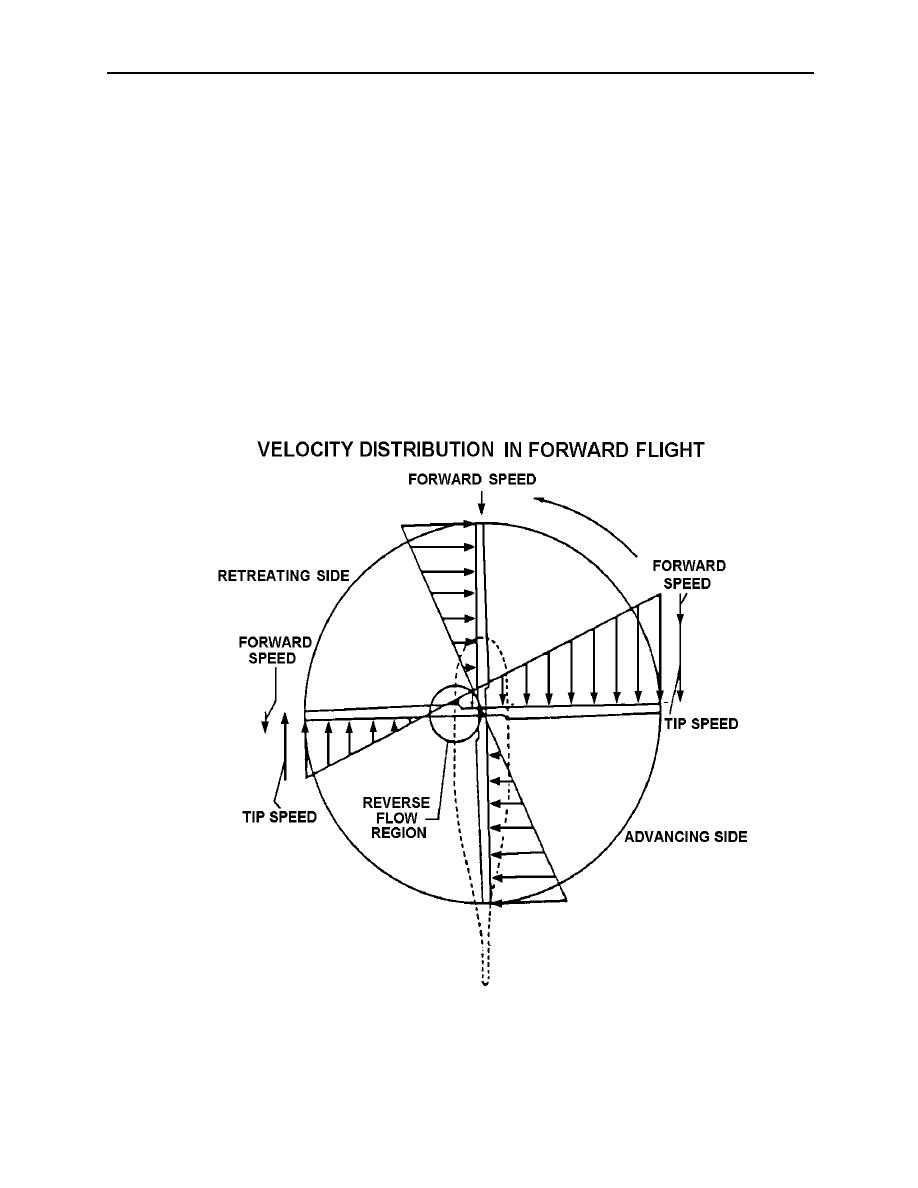 |
|||
|
|
|||
|
|
|||
| ||||||||||
|
|  CHAPTER 3
HELICOPTER AERODYNAMICS WORKBOOK
DISSYMMETRY OF LIFT
To begin this discussion, we need to backtrack all the way to rotor system control. In a no-
wind hover, the rotational velocity each blade sees throughout each revolution is equal. In
forward flight, the velocity distribution varies (figure 3-18). The advancing side of the rotor disc
sees a combination of rotor speed and forward airspeed (movement through the air mass) which
is faster than the retreating side, which sees a combination of rotor speed and a "reduced"
forward airspeed. For a given pitch setting, and AOA, an equal amount of lift will be produced
throughout the rotor disc in a no-wind hover, but in forward flight, the advancing side will
generate more lift, thus developing a rolling moment. The ingenious method of equalizing this
dissymmetry of lift in forward flight is to allow the blades to flap. By connecting the blades to
the hub by a method which allows a flexible up-down motion, the advancing blade, which
encounters higher lift, begins to flap upward. The retreating blade, which encounters less lift,
flaps downward. Flapping equilibrium is found at a point where the rotor system has an AOA
which compensates for changes in airspeed throughout the rotor disk revolution.
Figure 3-18
3-16 HELICOPTER POWERED FLIGHT ANALYSIS
|
|
Privacy Statement - Press Release - Copyright Information. - Contact Us |